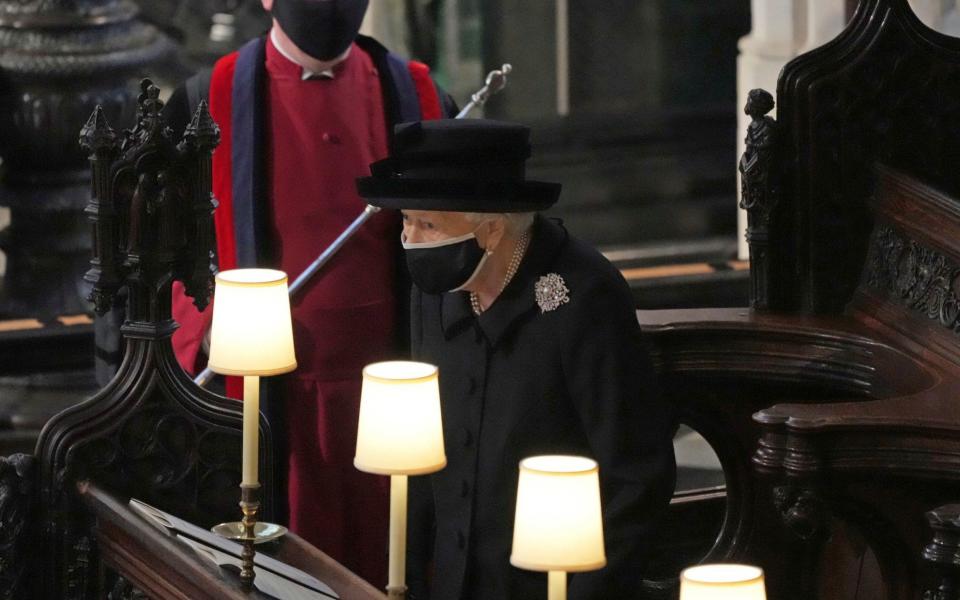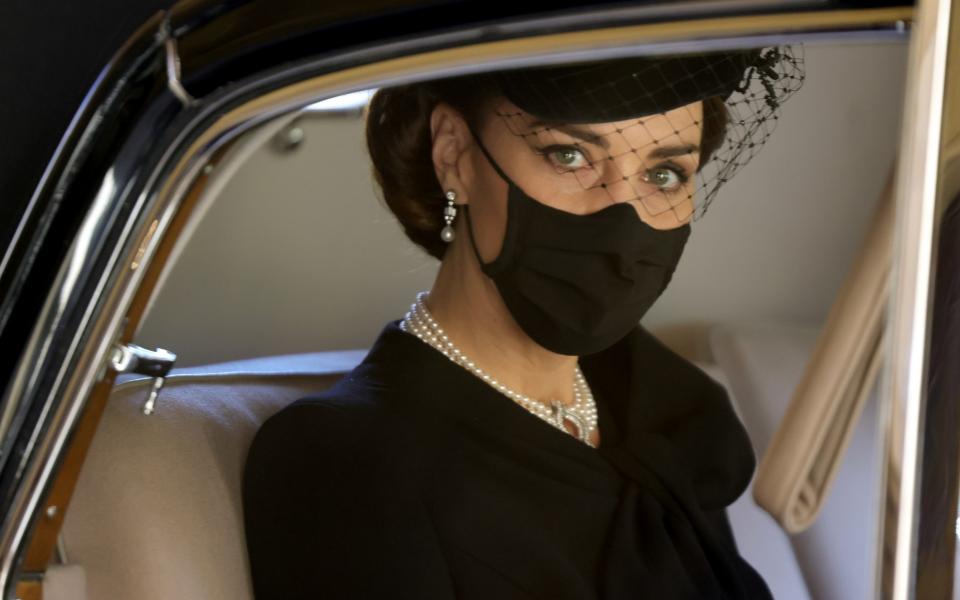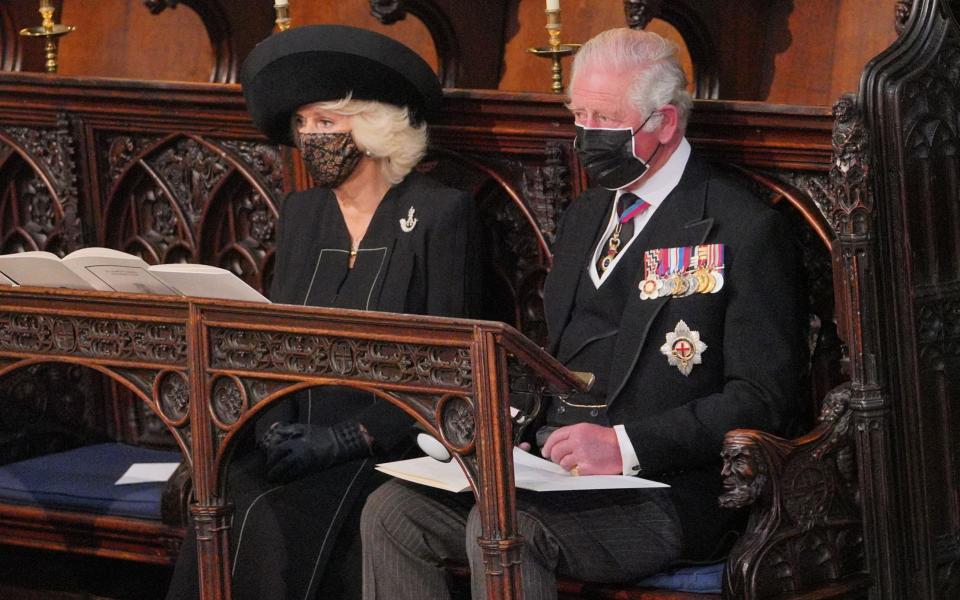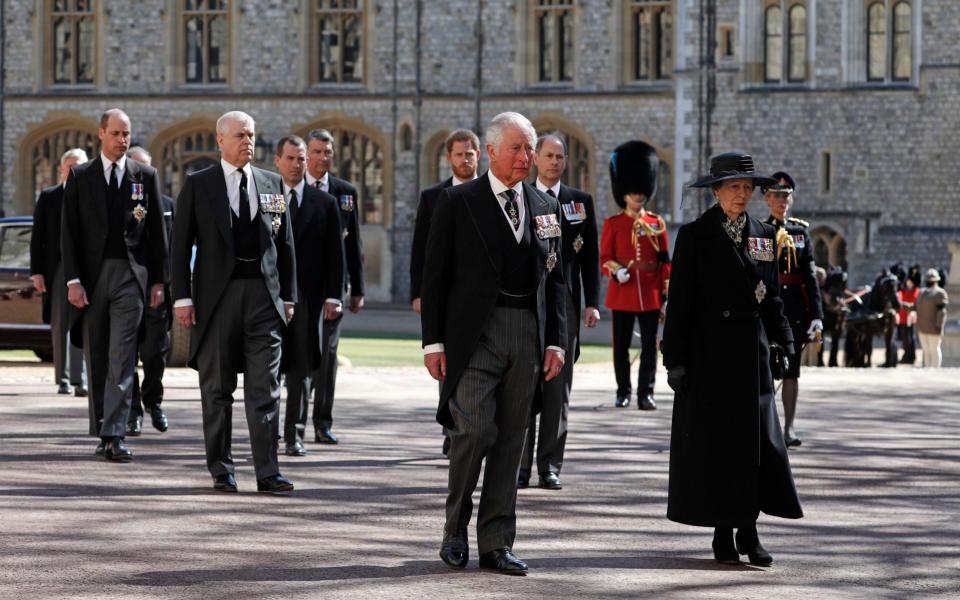Eye-catching jewellery and medals emphasised by the traditional mourning black

This was the first British royal funeral for the internet age. The level of grooming and the height of many of the women’s heels was notable – there was not a single inappropriate outfit, and one was aware that many of those present would have dressed for the closest scrutiny of the cameras.
If anyone understands the significance of mourning dress, it’s the royal family. And wearing black - a colour traditionally worn ever since Queen Victoria wore it following her husband Albert’s death in 1861 - means that deeply significant jewellery can be seen with piercing clarity.
The Queen chose a magnificent brooch to complement her simple black coat.
But the cut-away necklines of the Duchess of Cambridge's Roland Mouret dress and Catherine Walker coat – both items which she has worn before – was the ideal setting for her four strand, diamond clasped pearl choker and her diamond earrings, both borrowed from the Queen.

Princess Diana also borrowed the necklace for a banquet for the Dutch royal family in 1982.
This wasn’t the only allusion to Diana. By quirk or careful meditation, Princess Eugenie carried a Gabriela Hearst bag entitled The Diana.
Tiny veil trims adorned a number of hats, including the Duchess of Cambridge’s Philip Treacy pillbox.
When she attended her father, George Vl’s funeral in 1952, The Queen along with the Queen Mother and her sister Princess Margaret wore shoulder length veils.

The Duchess of Cornwall wore a lace face mask .The Queen wore a plain black face mask with white trim.
Meanwhile, HRH, the Princess Royal adorned her long black coat not with a dazzling brooch, but with the glittering medals of the many regiments of which she is Colonel-in-Chief.
For the men, the decision to wear traditional morning suits was a respectful show of solidarity and neutrality after the furore around whether the men of the royal household could and would wear military uniforms.
Prince Charles led the way in full morning dress, comprising a black morning coat and waistcoat with pleated grey trousers.
Of course, the full pomp and splendour of military regalia is a mighty thing to behold, but the princes' have a long history of wearing morning suits at important occasions, and the final ensembles were entirely appropriate to the sombre and historic nature of the event.
“Morning dress is as formal as one can be without wearing military uniform,” says Oliver Spencer, founder of formalwear house Favourbrook, which specialises in morning suits. “It’s the next step down, and a respectful way to dress for such an important event."

The Duke of Edinburgh was a fan of Savile Row tailoring, and it’s likely that the princes’ morning suits are from those historic institutions.
It’s certainly a stately and ceremonial ensemble, with the elongated, sweeping tail of the coat harking back to the Industrial Revolution, and the fact that it requires a waistcoat adding to its formality.
It's also a mode of dress that has precedence at royal funerals; Prince Philip himself, alongside his sons and grandsons, wore morning suits to Princess Margaret’s funeral in 2002.
Only at Princess Diana's did the men wear classic suits, a decision that chimed with the deeply moving, but less formal ceremony.

 Yahoo Movies
Yahoo Movies 